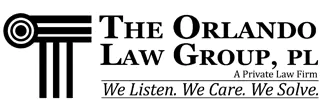Here is a round-up of what we know about the Paycheck Protection Program Flexibility Act that was signed into law this past Friday.
President Trump signed into law the Paycheck Protection Program Flexibility Act (PPPFA) with the intent of easing requirements for loan forgiveness under the PPP loan program.
Here is a brief review of what is included in PPPFA:
Changes in the required spend on payroll
The requirement to spend 75% on payroll costs has been adjusted to 60%. The requirements for using the remaining 40% (formerly 25%) have not changed; intended use includes rent/mortgage payments and utilities.
Increase in the timeframe to spend the loan proceeds
The PPPFA extends the time to spend loan proceeds from 8 to 24 weeks.
Since the PPP loan calculation included the average of monthly payroll costs in 2019 multiplied by 2.5, providing more time to use the funds should allow businesses some breathing room to spend the loan proceeds on qualified expenses.
Important notes on the PPP loan compensation
The timeframe to apply for forgiveness has not changed; businesses can apply for forgiveness as early as eight weeks after receiving proceeds.
The deadline to rehire employees is pushed back to December 31, 2020, giving employers a bit more flexibility in getting wages to count towards forgiveness.
The requirements to rehire employees have also been eased. However, employers need to document carefully, in writing, attempts to rehire an employee who rejected the job offer.
If an employer can demonstrate an inability to hire a similarly qualified individual, the business may still qualify for loan forgiveness.
If a business is unable to return to the same level of activity that was engaged before February 15, 2020, the business may still qualify for loan forgiveness.
Extension on repayment
The terms for loan repayment have been extended from 2 years to 5 years. The repayment schedule now defers the first payment for six months after the SBA makes a forgiveness determination
The loan repayment term is extended from 2 years to 5 years. The first payment will be deferred for six months after the SBA makes a forgiveness determination.
PPPFA allows businesses to take advantage of deferring the employer’s payroll taxes. Initially, the CARES Act did not permit deferment on the forgivable portion of the loan.
The deferrable amount is the employer’s portion of social security taxes that would have otherwise been due between March 27, 2020, and December 31, 2020. Now, 50% can be deferred until the end of 2021, and the remaining 50% is due by the end of 2022.
Breathing room for business working to operate at 2019 levels
This new law appears to be a step in the right direction. For companies that have been unable to perform at the same levels as in 2019 and early 2020, this law provides some breathing room.
In the hands of the SBA
It will be up to the SBA to interpret the Paycheck Protection Program Flexibility Act. Our recommendations on moving forward include meticulously documenting every financial transaction in your business and making sure you pay close attention to the expenditures that qualify for loan forgiveness.
Last Updated on June 10, 2020 by The Orlando Law Group








